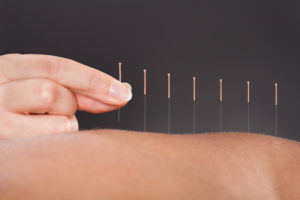 There has been a spike of interest in alternative pain treatments such as yoga and massage. When integrated with conventional medical treatments, they can help people cope with pain. According to a study published in Anesthesia & Analgesia, these treatments might help stem the tide of opioid abuse. The study suggests that pain reductions through these treatments may lower dependence on opioids and thus reduce the risk of opioid abuse.
There has been a spike of interest in alternative pain treatments such as yoga and massage. When integrated with conventional medical treatments, they can help people cope with pain. According to a study published in Anesthesia & Analgesia, these treatments might help stem the tide of opioid abuse. The study suggests that pain reductions through these treatments may lower dependence on opioids and thus reduce the risk of opioid abuse.
Pain and Opioid Abuse: Understanding the Connection
The 2012 National Health Interview Survey found that 11% of American adults experience chronic pain. In other words, they have daily pain for at least three months. Chronic pain isn’t fully understood, and it can be difficult to treat. When other strategies don’t work, doctors may prescribe opioids to people experiencing chronic pain. In 2015, the National Survey on Drug Use and Health found that 38% of Americans took an opioid prescribed by a doctor.
Though these drugs can relieve pain in the short term, they can quickly become addictive. In a 2014 study, 75% of people who abused opioids in the 2000s said their first exposure to opioids was through a prescription medication. The Centers for Disease Control and Prevention (CDC) have recommended doctors curb their prescription of opioids for noncancerous patients. But drug addiction can happen even when doctors provide careful supervision.
Addressing the opioid epidemic requires addressing America’s epidemic of pain.
Alternatives to Opioids
Researchers at Harvard Medical School wanted to assess the role of alternative medicines in managing pain. They analyzed 32 studies of alternative pain treatments. These included:
- Yoga
- Acupuncture
- Relaxation techniques
- Nutritional supplements (such as glucosamine and chondroitin)
- Massage therapy
Most of the studies did not directly evaluate the effects of alternative treatments on opioid use. Instead, they looked at the degree to which the treatments could reduce pain. The preliminary evidence suggests that most of the treatments are beneficial in managing chronic pain.
Nutritional supplements had the weakest evidence for their effectiveness, and acupuncture had the strongest evidence. The research also showed acupuncture can lower the dose of opioids needed after surgery.
This research is preliminary in nature. It suggests people with chronic pain could benefit from alternative treatments. However, the scope of those benefits is unknown. Further studies could explore how alternative medicines specifically affect opioid use or assess their unique mechanisms of pain relief.
References:
- Cicero, T. J., Ellis, M. S., Surratt, H. L., & Kurtz, S. P. (2014). The changing face of heroin use in the United States: A retrospective analysis of the past 50 years. JAMA Psychiatry, 71(7), 821-826. Retrieved from https://jamanetwork.com/journals/jamapsychiatry/fullarticle/1874575
- Integrative medicine approaches for pain treatment: Can they be an alternative to opioids? (2017, November 21). EurekAlert. Retrieved from https://www.eurekalert.org/pub_releases/2017-11/wkh-ima112117.php
- Lin, Y., Wan, L., & Jamison, R. N. (2017). Using integrative medicine in pain management: An evaluation of current evidence. Anesthesia & Analgesia, 125(6), 2081-2093. Retrieved from http://journals.lww.com/anesthesia-analgesia/Fulltext/2017/12000/Using_Integrative_Medicine_in_Pain_Management___An.38.aspx
- More than 1 in 3 Americans prescribed opioids in 2015. (2017, August 1). CBS News. Retrieved from https://www.cbsnews.com/news/more-than-one-third-americans-prescribed-opioids-in-2015/
- NIH analysis shows Americans are in pain. (2015, August 11). National Center for Complementary and Integrative Health. Retrieved from https://nccih.nih.gov/news/press/08112015
© Copyright 2017 GoodTherapy.org. All rights reserved.
The preceding article was solely written by the author named above. Any views and opinions expressed are not necessarily shared by GoodTherapy.org. Questions or concerns about the preceding article can be directed to the author or posted as a comment below.

 3 Ways Psychotherapy Can Help with Chronic Pain
3 Ways Psychotherapy Can Help with Chronic Pain New Addiction and Recovery Law Targets Opioid Overdoses
New Addiction and Recovery Law Targets Opioid Overdoses 3 Reasons You Haven’t Tried Meditation (and Why You Should)
3 Reasons You Haven’t Tried Meditation (and Why You Should)